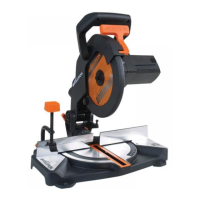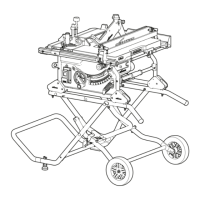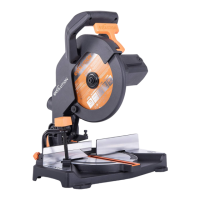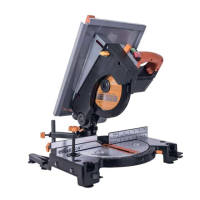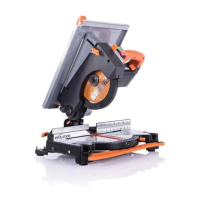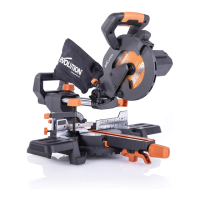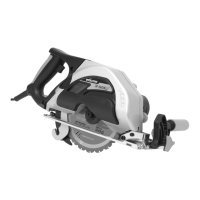38
www.evolutionpowertools.com
ASSEMBLY SAFETY CHECKS
PART CONDITION YES
Slide Carriage Inserted through the bevel neck and connected to the cutting head.
Locating pins successfully deployed.
Mitre Handle Locking Knob Installed into mitre handle / rotary table.
Slide Carriage
locking screw
Inserted into the threaded hole in the bevel neck. Anti-vibration
spring fitted beneath the locking screw hand knob.
Power Cable Routed correctly with cable guide/clamps correctly installed.
Blade Blade correctly installed and with the rotation arrows on the blade
and on the machine matching. Outer blade flange and arbor bolt
correctly fitted.
Safety Guards Lower Safety Guard fully operational. Cutting head locks in the upper
position with blade covered. Cutting head can only be lowered when
Blade Guard Locking Lever is operated.
Supply Supply matches specification found on machine Rating Plate. Plug
matches power source outlet.
Mounting Either:
a) Machine permanently sited and bolted to workbench.
b) Machine mounted on board which can be clamped to workbench.
c) Machine is bolted to a dedicated mitre saw Stand.
Sited Adequate provision made for the handling of long or irregular
shaped work-pieces.
Environment Dry, clean and tidy. Temperature conducive to material handling.
Lighting adequate (double banked if fluorescent lights are used).
All the Yes Boxes must be ticked before the machine can be used. No tick = No use.
FINAL SAFETY CHECKS
PART CONDITION YES
Assembly
Repeat the Assembly Safety Checks.
Operation With the machine switched off and disconnected from the mains
supply, carry out the following procedures:
• Set the machine to each of its maximum operational settings in turn.
• At each setting lower the cutting head to its lowest position,
observing the path of the blade as you do so.
• Check that the blade does not interfere or strike any part of the
machine, castings or guards as the cutting head is lowered.
• Check that when the sliding carriage is employed no contact
between the cutting head and the blade and other parts of the
machine occurs.
• Spin the blade by hand (it is advisable to wear gloves whilst doing
this, but not when the saw is being used operationally).
• Check that the blade rotates smoothly with no unusual noises, and
that there is no contact between the blade and the upper and lower
blade guards.
• Check that there is no discernible blade ‘wobble’ in any direction as
the blade rotates.
All the Yes Boxes must be ticked before the machine can be used. No tick = No use.
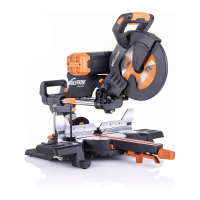
